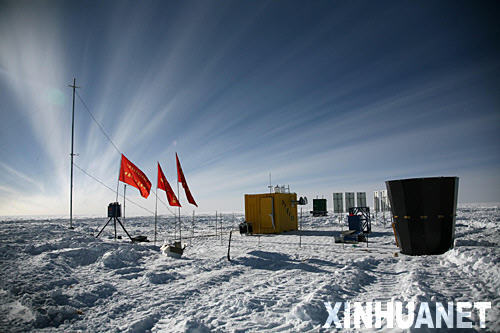Chinese astronomers will set up a stronger telescope network on Dome A, the top of the south pole, after the initial success in January, 2008, an astronomer said at a symposium that concluded Thursday in Haining of east China's Zhejiang Province.
 |
|
Chinese scientists built an astronomical observation station in the South Pole on January 26, 2009. They will set up a stronger telescope network on Dome A, the top of the south pole after the initial success in January, an astronomer said at a symposium that concluded on July 23 in Haining of east China's Zhejiang Province. |
Gong Xuefei, an astronomer involved in the telescope project, said at a cross-Straits forum on astronomical instruments that the new telescopes are being tested and the first of them is expected to be installed in the south pole in the summers of 2010 and 2011.
The new network Antarctic Schmidt Telescopes 3 (AST3) is made up of three Schmidt telescopes with an aperture of 50 cm, said Gong, who is an associate researcher of the Nanjing Institute of Astronomical Optics and Technology (NIAOT).
The previous network, the Chinese Small Telescope Array (CSTAR), consists of four telescopes with an aperture of 14.5 cm.
Cui Xiangqun, director of the NIAOT, told Xinhua that AST3's main advantage over its predecessor is wider aperture and adjustable directions of the lens, which allows it to see deeper into the space and follow moving celestial bodies.
The CSTAR Telescopes were fixedly pointed to the South Pole.
At a cost of between 50 million to 60 million yuan (about 7.3 million to 8.8 million U.S. dollars), the AST3 would play a better role in searching for earth-like planets and hundreds of supernovas, Cui said.
Designers of the new telescopes had drawn experiences from previous ones and taken into consideration the special environment of the south pole, such as low temperature and low air pressure, Gong said.
The south pole area has an advantage in astronomical observation due to its cold and dry climate, long polar nights, low wind velocity and little dust. Dome A is an ideal observation spot where telescopes can get images nearly the same quality as those got by telescopes stationed in the space, but at a much lower cost.
(Xinhua News Agency July 24, 2009)